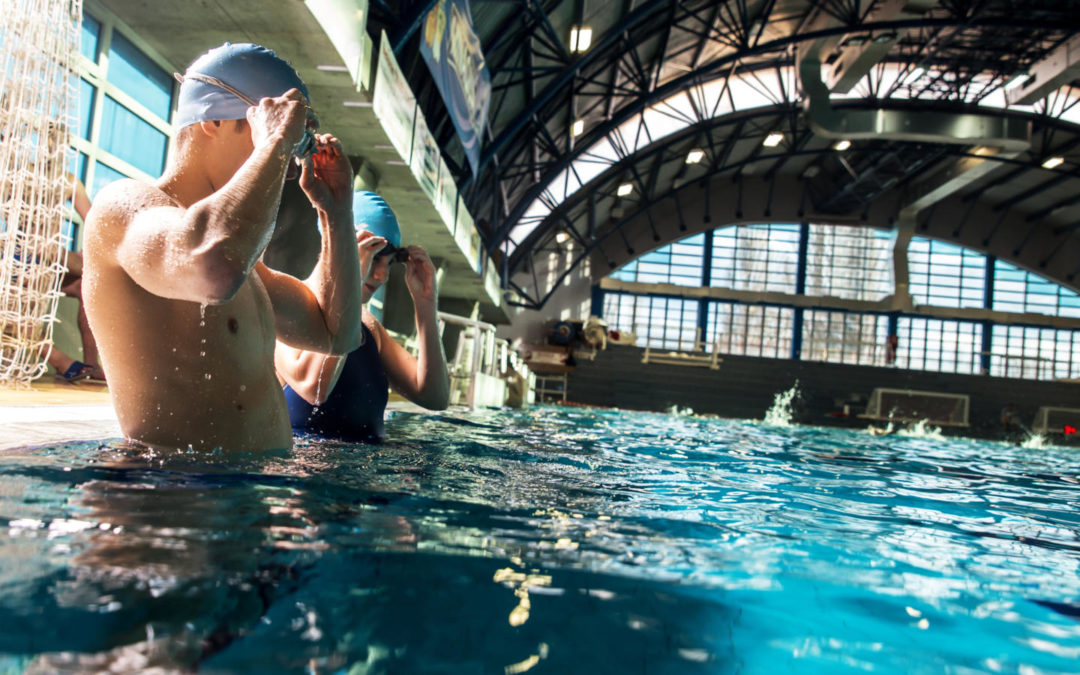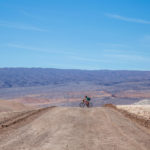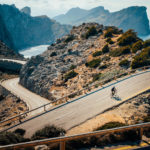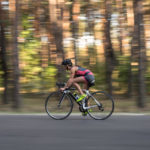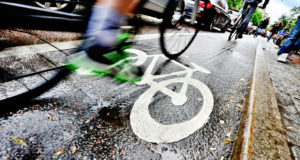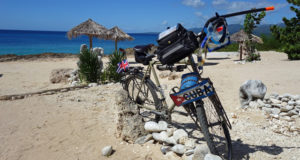Swimming provides a good balance for bikers who want to stay fit and are looking for a suitable sporty alternative for the winter months. It trains the whole body and compensates for muscular disbalances.
Swimming burns calories
Swimming improves your stamina as well as your arm-leg coordination. Thanks to the water resistance and the fact that swimming demands the use of numerous muscles, swimmers burn a lot of calories. Especially the upper body (which is chronically underused when cycling) is trained when swimming.
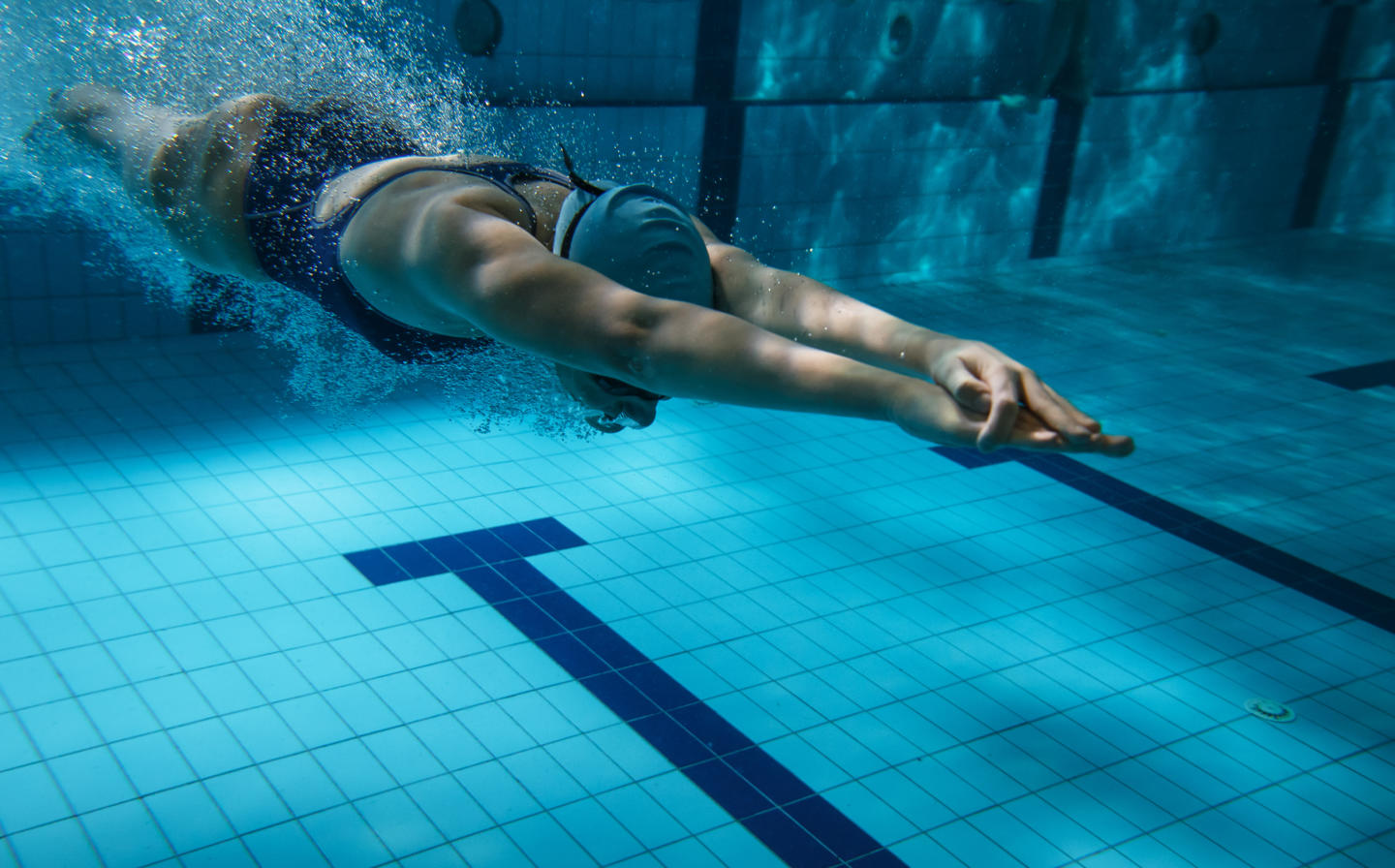
Swimming is about the right technique
Not only the coordinated, rhythmic movements of arms and legs but also your breathing technique matter when swimming. Doing the crawl without using the correct technique can be very ineffective.
Tip: There are many swimming courses for beginners in winter. After a few lessons, you’ll have learned the basic movements and will be able to swim independently while using the correct techniques.
Swimming is diverse
There are four strokes: Breast stroke, back stroke, the crawl and the butterfly. Beginners should start out doing breast strokes to loosen their muscles in the water and to develop a feel for the wet element.
Ambitious athletes use the crawl and back strokes to train their backs. Various breathing techniques, tumble turns, gliding, arm techniques, leg strokes and positions in the water are terms one should get acquainted with.
Butterfly swimming is a lot of fun when done correctly and rounds off an all-encompassing swim training.
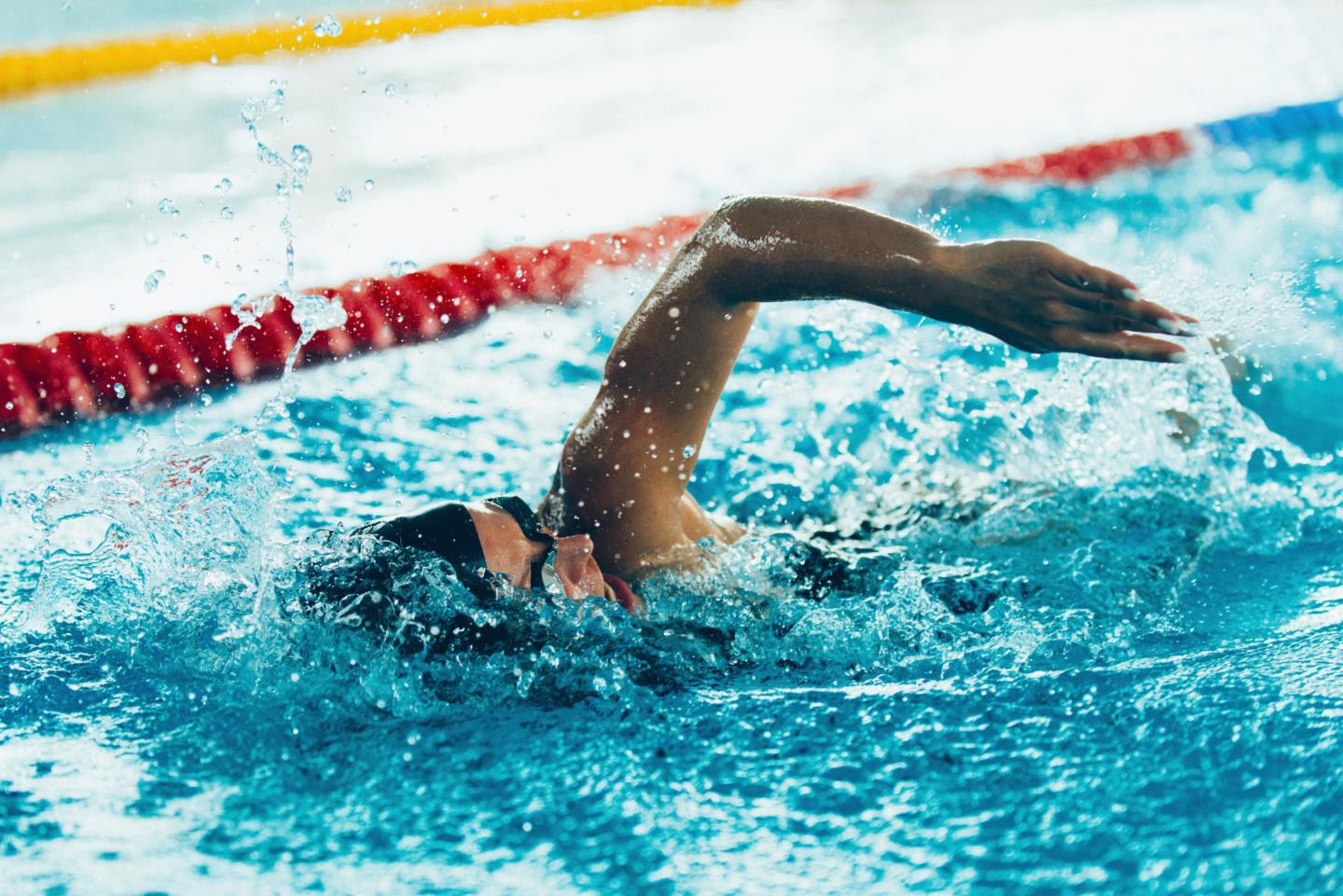
Training tips for your swimming session
You should do at least two swimming sessions a week to learn the correct techniques. A session starts with a warm up (swinging exercises) and a technical part which is followed by a section training either your speed or improving your stamina.
Example swimming session
- 10 lengths à 25m (250m) to warm up (at the poolside with swinging exercises and short, dynamic stretching)
- 10-20 lengths à 25m to improve your technique (swimming with legs only, arm-leg coordination, breathing exercises)
- 10 lengths à 25m of alternating between a fast and a slow length with 10 seconds in between lengths
- 64 lengths à 25m (1600m) to ameliorate your stamina (back stroke and crawl in alternation)
- 8 lengths à 25m (200m) to warm down (breast stroke)
Conclusion
Swimming is an amazing training for cyclists. However, a professional trainer should teach you the correct techniques if you’re thinking of starting to swim regularly. The equipment needed is relatively simple and cheap compared to cycling equipment. Once you’ve learned how to swim properly and you have fun doing it, you might be participating in your first triathlon soon.
How do you keep fit for the upcoming cycling season during winter?
Leave a comment or send your tips to astrid@bikemap.net!
- The Top 5 Cycling Destinations in 2020 - January 14, 2020
- Your First Long Bike Ride – 200km and More - January 11, 2020
- 4.5M – The World’s Largest Cycling Route Collection - November 21, 2019
Author Profile
- Hannah ist begeisterte City-Bikerin und Geographiestudentin. Sie genießt es, bei der Recherche von neuen Radregionen und Themen für den Blog immer wieder etwas Neues zu lernen.

